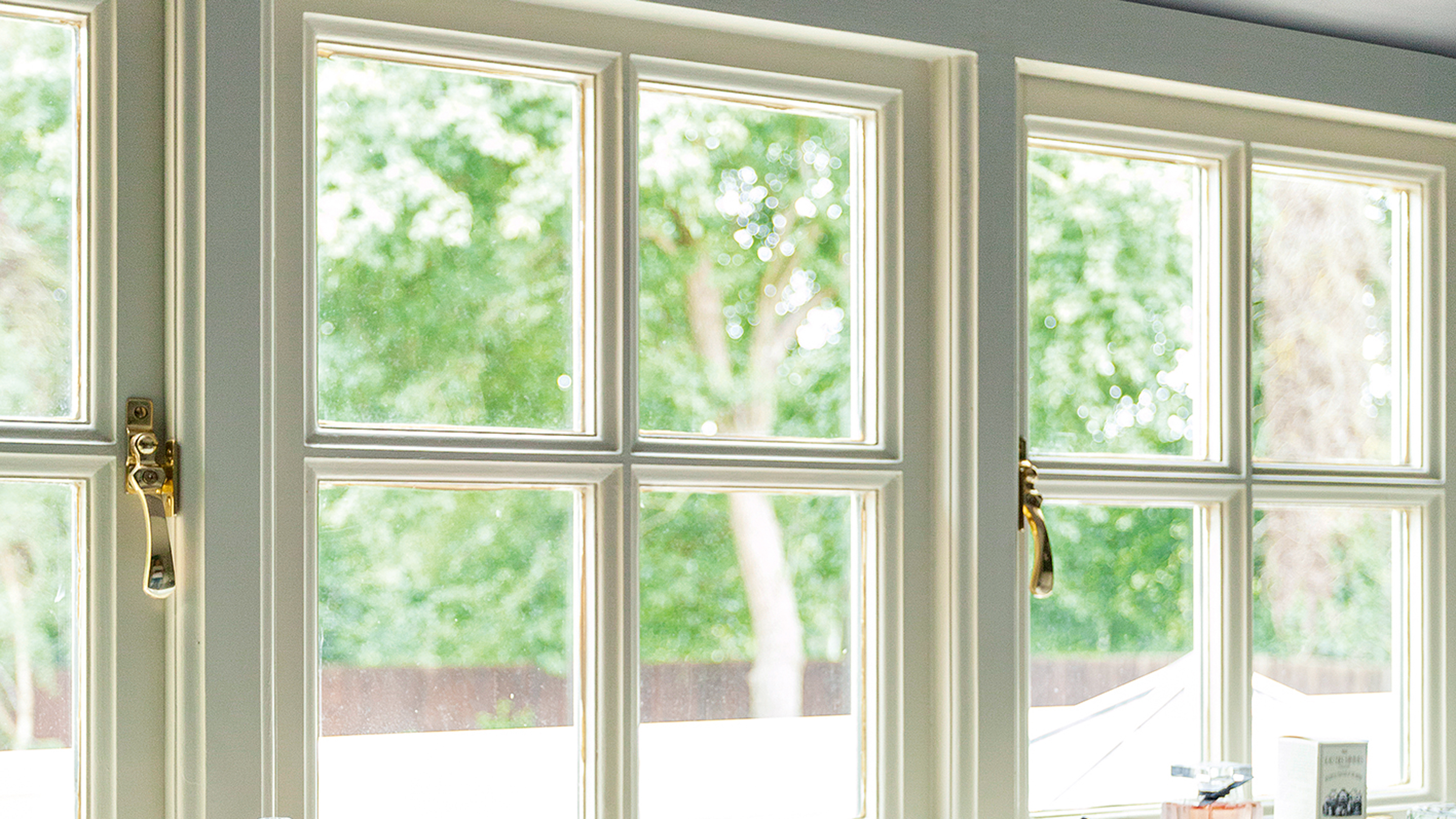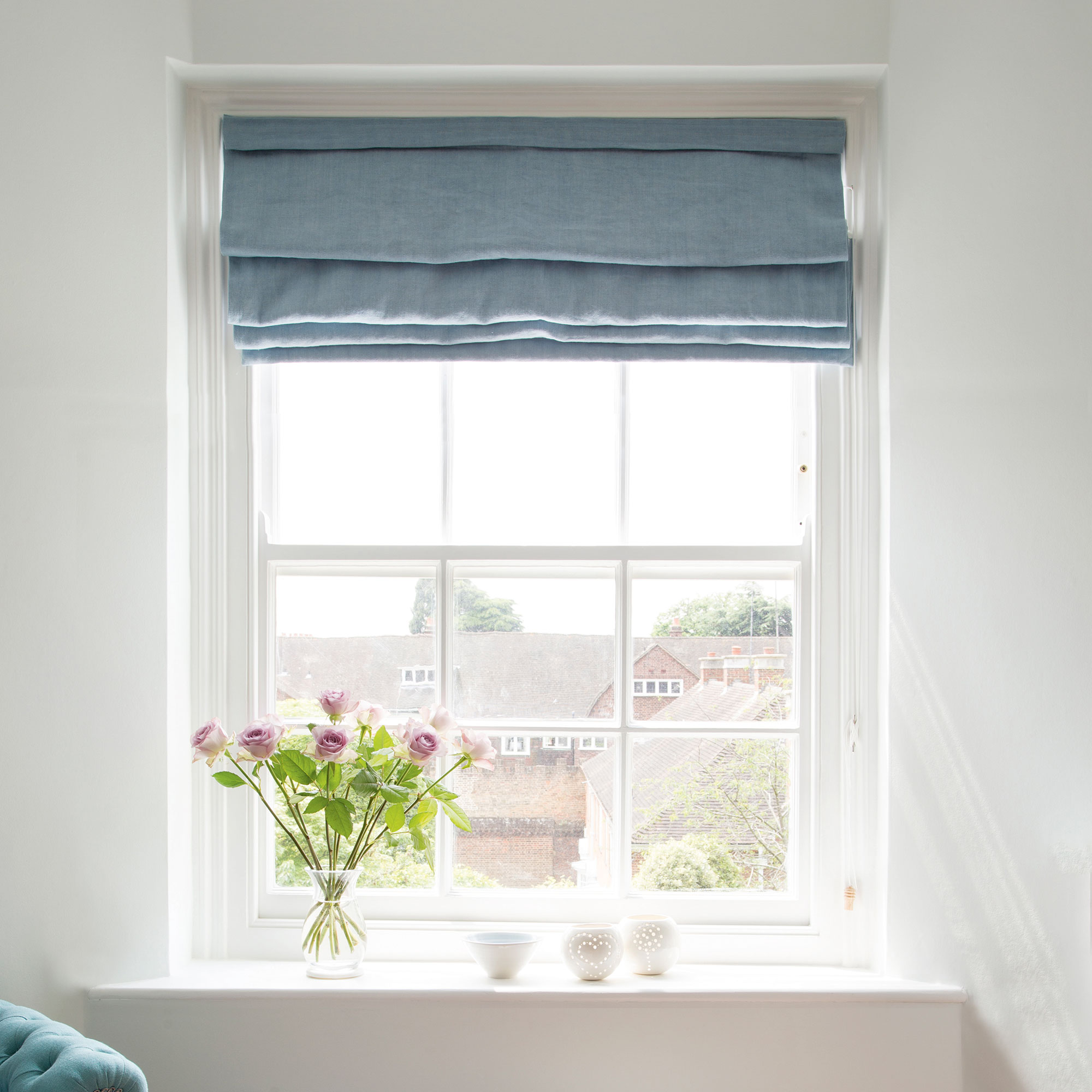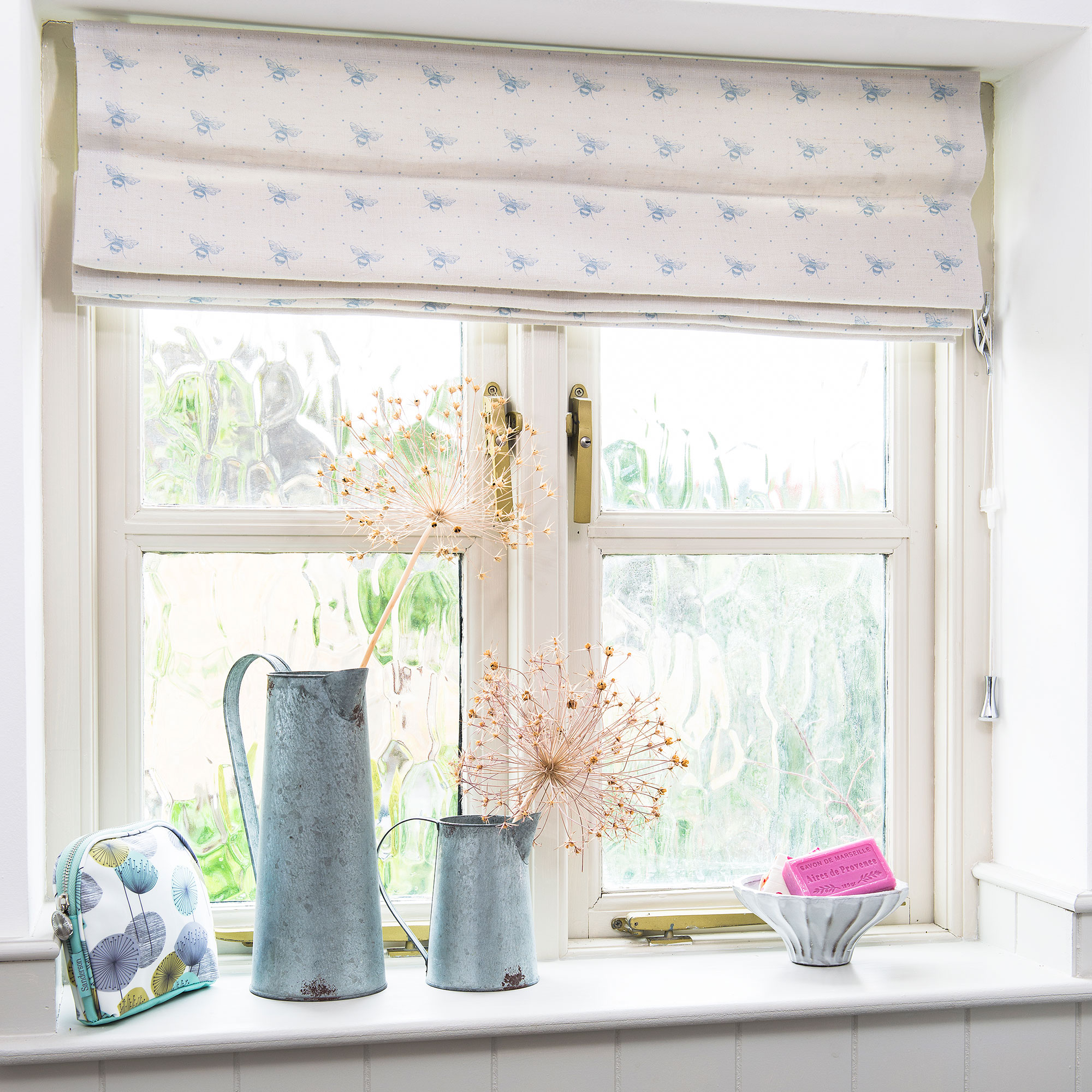How to draught proof a window - easy ways to keep heat inside your home this winter
Seal up unwanted gaps in window frames to save energy and keep rooms cosy


Rebecca Knight
Learning how to draught-proof your windows this autumn is a great idea to help keep energy costs low, and your home warm throughout the winter months. If you've missed the autumn months and struggling with draughty windows in the middle of winter, don't panic, there are plenty of easy fixes to help keep the warmth inside your home.
The average home loses around 18% of its heat through its windows. Glass isn't a great insulator, and gaps around the frames can make them particular pain points when it comes to how to keep a house warm in winter.
'When you’re thinking about making your home more energy efficient, your windows should be top of your priority list,' explains OVO Energy Expert, Greig Millar. 'Although double glazing can be expensive, draught-proofing can be comparatively cheap and easy, and often gives immediate results.'
Research by the Energy Saving Trust, found that draught-proofing around windows and learning how to draught proof a door could save £45 a year on energy bills. That is a nice little money-saving to-pocket.
How to draught proof a window
Damaged seals between the window and its frame are generally the culprit, and there are various products available to fix this yourself. However, be careful not to compromise ventilation routes.
‘It’s important to never block window trickle vents and to avoid over draught-proofing windows in kitchens and bathrooms where the moist air needs to escape,' says Natasha Collins-Daniel, campaigner at the Centre for Sustainable Energy. 'Otherwise, you could end up with damp or mould problems.'
1. Work out where the draught is coming from
The first step before shelling out on any DIY suppliers or enquiring about contractor rates is to work out where the draught is coming from, and what is causing it.
'I’d suggest looking for any obvious gaps and cracks around your window frames that suggest they’re unaligned and letting draughts in,' says Greig Miller from Ovo. 'It's better to look for these in the daytime, as they’ll be more visible when the light is shining through.'
Greig all recommends listing out for draughts too. 'If you can clearly hear the noise from outside when standing inside and the window is shut, this is a good indicator that your glazing needs some draught-proofing, or an upgrade altogether,' he says. 'In high winds, spot draughts by listening out for rattles and whistling noises and feeling for cold air coming in.'
2. Understand the window style

The way a window opens will have an impact on the best way to draught proof. Casement designs are common – these tend to be side hung and swing open like a door. Sash windows have two panels that slide up and down.
Other styles include tilt-and-turn, sliding and bay designs. Some glass is fixed and not designed to be opened – and there’s glazed doors, too.
3. Consider upgrading your window glazing

Are your windows in good enough condition to keep? If the frame is badly damaged or has mould issues, then your best bet could be replacement windows with new energy efficient models. Proper installation will mean no draughts and the modern glass will reduce heat loss.
Could you upgrade single glazing to double? According to the Energy Saving Trust, installing A-rated double glazing to windows in an entirely single-glazed semi-detached gas-heated property, you could save £155 a year. There are many types of glazing and heritage-style windows available, so you don’t need to worry about changing the look of your home.
Some companies can even refurbish existing single-glazed windows to include double glazing within the same profile, and update the draught proofing at the same time.
4. Draught proof with strips

If you’re happy that DIY draught proofing is the route to go down, then look for foam, metal or plastic draught strips (or weatherstrips) specifically designed for windows. 'The easiest way to fix a draughty window or door is to use foam tape on the frame that helps fill in those gaps,' explains Kimberly Coutinho, draught-proofing buyer and expert at Robert Dyas. These strips are usually suitable for draught-proofing a window with casements but not sash designs.
‘Silicon fails over time, so reseal using a proper window sealant and not just a generic product,’ says Peter Draper, Project Associate at STBA.
Measure your window to make sure you’re buying the right size product – too big and the strip could stop the window from closing properly; too small and you’ll still have a gap. Self-adhesive strips simply stick around the window frame to close the gap between that and the glazing. If you're not sure what product to go for Kimberly recommends the stormguard rubber draught seal from Robert Dyas.
5. Fit secondary glazing

If you’ve got single glazing that can’t be upgraded to double, whether that’s because of planning restrictions on a listed property or your budget, then adding another glass layer to your windows is a good option. Secondary glazing involves essentially adding another window to the inside of an existing one it is a job best installed by a professional.
However, if you're looking for a DIY fix Kimberly recommends trying a secondary glazing film. This simple fix is a transparent glazing film that you can cut to size and fit over the entire window to stop warm air from escaping. You can pick up a stormguard secondary glazing film from Robert Dyas for under £20. It comes with adhesive strips to apply the film around the window frame, then simply smooth over creases with a hair dryer.
6. Install thermal curtains or blinds

Even windows with efficiently sealed frames will still let more cold in than a solid wall. So, complete your window upgrade by using some clever curtain ideas and fitting a thermal curtain or blind. These are thicker than standard products and are specifically designed to help keep your living spaces cosy.
‘Fitting heavy curtains over doors and windows, shutting them at night and tucking them behind radiators are all good ways to significantly reduce draughts as well as keep the heat in,’ adds Natasha Collins-Daniel from Centre for Sustainable Energy.
How to draught proof a sash window

How to draught proof a sash window will need a different tactic. ‘They are made with a small 3mm gap around each of the sashes, enabling them to move past one another but subsequently letting in draughts, dust and water, causing rattles on windy days and letting loud noises filter through,’ says Nick Woodhead, Estimating Manager at Ventrolla.
Sash windows need brush strips (much like those fitted to a front door). These are readily available to buy online and you can get white designs to white to match your windows. Some have self-adhesive backing, others might need to be pinned into position. Some sash windows have keyhole areas which can also let draughts in – you can get caps to put over them to prevent this.
FAQs
How do I stop draughts from my windows?
There are many ways you can draught-proof windows if you are aiming to DIY the job retrospectively. 'There are several products you can purchase to help with draught-proofing your windows,' says Greig Miller from Ovo who recommends considering the following four options:
- Wiper seals - Also known as dirt excluders, these are metal or plastic strips that have brushes or wipers attached. The brush compresses slightly when the window is closed, creating a seal to stop heat from escaping. They work well on sliding sash windows, or anywhere there’s an uneven gap or a warped surface.
- Draught-excluder tape - A roll of draught excluder tape is one of the cheapest and most effective ways to block gaps in windows, saving you energy and money.
- Silicone sealant - Sealant can be used for windows that aren’t designed to open, by placing it over gaps or misaligned windows to block out draughts.
- Heavy thermal curtains - Installing thermal curtains can make a big difference to your home’s insulation. Alternatively, adding thermal lining to your existing curtains can significantly help to reduce heat loss and draughts.
Can you draught-proof double glazed windows?
If you have upgraded to double or even triple glazing, the chances of a draught should be small. However, they can still happen if they've not been fitted properly. The good news is you can still draught proof double glazed window using thermal curtains or using weatherproof strips.
Stop any draughty rattles asap and we promise your future self will thank you.
Get the Ideal Home Newsletter
Sign up to our newsletter for style and decor inspiration, house makeovers, project advice and more.

Emily Batesmith is a journalist and senior magazine editor specialising in homes, renovation and self-build. She’s spent more than a decade creating content for the UK’s leading homes titles on a huge variety of topics that help people to realise their dream property. Her writing ranges from practical advice on installing money-saving renewable tech and inspiring interior ideas for the perfect living space, through to in-depth guidance on building systems and products, and easy-to-navigate DIY guides.
- Rebecca KnightDeputy Editor, Digital
-
 Will a conservatory add value to your home and how can you maximise it?
Will a conservatory add value to your home and how can you maximise it?This is what the pros say
By Amy Reeves
-
 I’ve been looking for a new signature scent for my home and The White Company's new fragrance is the exact summer holiday smell I needed
I’ve been looking for a new signature scent for my home and The White Company's new fragrance is the exact summer holiday smell I neededSantorini smells fresh, summery and sophisticated
By Kezia Reynolds
-
 How to remove algae from garden walls in five steps – and the cleaning product experts rave about for tackling it fast
How to remove algae from garden walls in five steps – and the cleaning product experts rave about for tackling it fastExperts share their top tips for getting garden walls algae-free
By Katie Sims